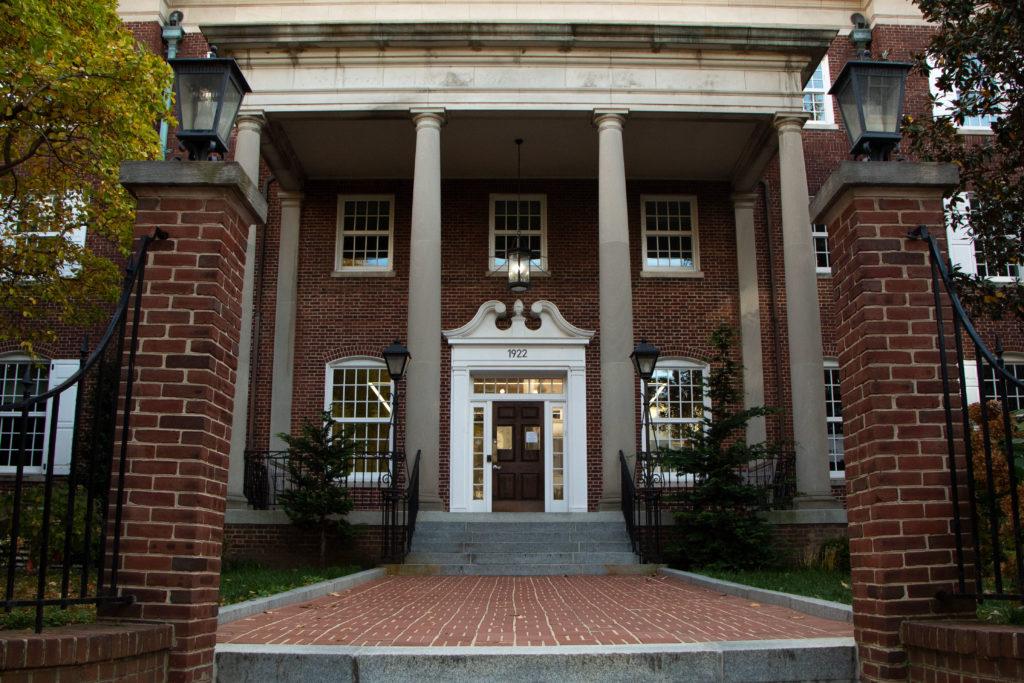About 30 people gathered in the Marvin Center Tuesday evening to discuss potential improvements to the Metro lines Foggy Bottom residents rely on the most.
Washington Metropolitan Area Transportation Authority officials presented six proposals for line expansions and connection options intended to accommodate the growing D.C.-area population, create a more efficient rail system and decrease the Metro’s environmental footprint. The plans aim to redirect heavy foot traffic around the Silver Line and increase capacity, reliability, flexibility and sustainability throughout the Metro, officials said.
Mark Phillips, a principal planner and senior economic analyst for WMATA, presented a “corridor strategy,” which would create connections within a two-mile radius around the Silver, Orange and Blue lines and potentially add a stop in Georgetown. Phillips said the project aims to address the increased congestion on and foot traffic near the Silver Line.
“The state of good repair and safety are our top priorities,” he said. “But we know we have the capacity and reliability, and we have every reasonable expectation to believe those are going to be much worse in the next 20 to 25 years.”
Phillips said unexpected errors, like mechanical issues or fires, that occur on a single train in the “corridor” ultimately affect all three lines because Orange, Silver and Blue trains run in the same tunnel. A train that fatally struck a person at Farragut West Monday forced the Silver Line to backtrack and prompted officials to close multiple stations between Foggy Bottom and Metro Center.
Phillips said officials will solicit regional input about potential improvements to the Blue, Orange and Silver lines and review board approval of solutions, funding and implementation of plans by fall 2020.
“For me, it’s really fun to draw lines on the map or look at where people live and where they work and how to connect the two,” Phillips said. “But when you try to figure out how to pay for it, a potential multibillion-dollar project with much more detail, the team is tasked with at least giving us a roadmap for that.”
Gordon Taylor – a member of BOYDS Civic Association, the governing body for Montgomery County – said WMATA should add more options for direct transport to the Silver Line, specifically in Virginia counties like Fairfax and Tysons Corner, to reduce the amount of time riders spend transferring between trains.
“Anything that can be done to make that more rapid without the connection or somehow, as some of the options proposed, bypassing some of those down county and city stations to create a more direct route,” Taylor said.
James Harnett, a senior and a Foggy Bottom and West End Advisory Neighborhood Commissioner, said the growing D.C.-area population will likely augment congestion on Metro lines, and he wants to ensure that any new infrastructure officials build won’t disenfranchise residents most reliant on the transportation system.
“And the infrastructure we build is responding to both the need to make sure what we’re moving forward with is done so in an equitable way and prioritized transit for those who have access to sustainable, frequency and affordable transit options,” Harnett said.
Patrick Kennedy, the ANC’s vice chair and a candidate for Ward 2’s D.C. Council seat, said officials are still developing the expansion project. But he said public engagement, like the Marvin Center meeting, allows officials to hear and discuss various ideas with those who would be affected, which will help officials formulate future conversations about the expansion.
“Thinking in the long run about this sort of thing, just making sure you can access more destinations in the region, because there are places like Georgetown and Dulles Airport until the line opens up next year that are just outside the existing system,” Kennedy said. “Anything that makes transit more viable for more people and more trips is a definite benefit.”




